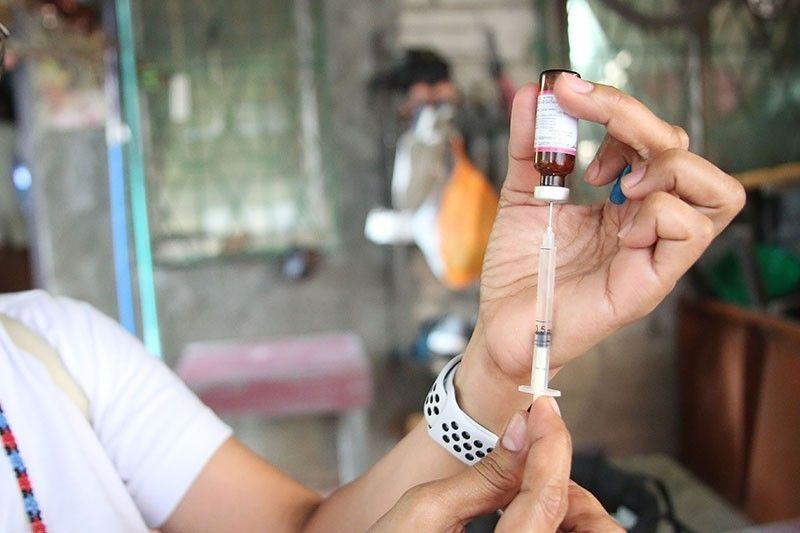Immunization during COVID-19 outbreak: Everything you need to know

MANILA, Philippines — With the novel coronavirus disease 2019 (COVID-19) outbreak already stretching the limits of the Philippine health care system, experts are pushing for the continuation of immunization services to reduce the burden posed by other vaccine-preventable diseases.
“Our healthcare facilities, institutions, and workers are experiencing extreme fatigue due to the challenges of responding to COVID-19, making it more difficult to provide medical attention to people with other diseases,” said doctor Lulu Bravo, Executive Director of the Philippine Foundation for Vaccination.
Successive outbreaks that battered the Philippines last year, namely measles and polio – which reemerged almost two decades after it was eradicated – have been attributed to declining immunization coverage.
The United Nations Children's Fund (UNICEF) said that immunization among children in the country decreased from 87% in 2014 to 68% in 2019.
Now compounded by the COVID-19 crisis, the UN agency fears that as many as two million Filipino children could be missing out on lifesaving vaccines, with quarantine-related disruptions and suspensions in routine immunization efforts.
Bravo also pointed out that movement restrictions under lockdown reduced the transmission of measles and respiratory diseases like the flu.
But with the recent easing of quarantine rules in many areas in the country, the public has more reason to guard themselves and others against vaccine-preventable diseases as much as the coronavirus threat.
Here’s what you need to know about the role and status of immunization in the Philippines amid the COVID-19 outbreak.
How will non-COVID-19 immunization help ‘flatten the curve’?
Flattening the curve is associated with having a sufficient healthcare capacity that can accommodate COVID-19 patients alongside those admitted for other health problems.
Dr. Lulu Bravo, May 6, 2020 forum:
“With immunization, we protect our frontliners and medical workers who are exposed to diseases everyday as well as children, pregnant women, the elderly, and people with underlying conditions who are at higher risk of contracting infectious diseases... With fewer people needing medical attention and with healthier medical workers, we can then lighten the load on our healthcare facilities and allow them to focus more on COVID-19 cases.”
When and where should immunization activities resume?
UNICEF, Apr. 24, 2020 release:
"Local government units with no known COVID-19 cases and which have adequate staff and vaccines are advised to resume immunization activities “if feasible.”
Department of Health, Department Circular dated Mar. 25, 2020:
“Wherever feasible and where the benefit-risk assessment is positive, routine immunization services shall continue and shall be integrated with other essential health services which remain uninterrupted.”
What should health authorities do if immunization is suspended?
Department of Health, Department Circular dated Mar. 25, 2020:
“In instances where routine immunization is temporarily suspended, healthcare workers shall maintain a list of children who have missed their vaccinations and active catch-up immunization activities shall be implemented as quickly as possible, once the COVID-19 situation permits."
How will safety from COVID-19 be assured during immunization?
Department of Health, Department Circular dated Mar. 25, 2020
- “Performance of hand hygiene in between clients using soap and water shall be strictly followed. If soap and water is not available, alcohol-based preparation can be used.”
- “In healthcare facilities where immunization services are maintained, vaccination shall be performed in areas that are disinfected, well-ventilated and allow vaccines to maintain a physical distance of at least one (1) meter from other clients”
What can be done to improve immunization rates?
UNICEF, Apr. 24, 2020 Release:
“Predicting vaccines stock out, reaching remote areas and disadvantaged children as well as increasing budget and staff of local governments are needed to prevent a further decline in immunization rates."
— With reports from Gaea Katreena Cabico


















